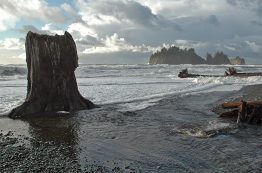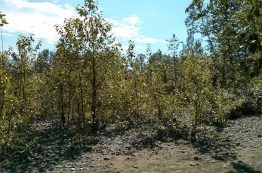Antarctica’s next deep ice core, drilling down to ice from 130,000 years ago, will be carried out by a multi-institutional U.S. team at Hercules Dome, a location hundreds of miles from today’s coastline and a promising site to provide key evidence about the possible last collapse of the West Antarctic Ice Sheet. The National Science Foundation has funded the roughly five-year, $3 million project involving the University of Washington, the University of New Hampshire, the University of California, Irvine and the University of Minnesota.
Read more at UW News »Communicating science in a virtual world
The COVID-19 pandemic has added one more layer of complexity to communicating science. But where there’s challenge, there’s also opportunity. Used creatively, our online ecosystem can be leveraged to build new relationships, share our work in innovative ways and increase the reach of our science to different audiences. Whether giving a talk, arranging an event or trying to imagine new pathways to share your work, below are some pros and cons of using digital platforms, and some tips to keep your audience engaged.
Read more »Military flights biggest cause of noise pollution on Olympic Peninsula
An area in the Olympic Peninsula’s Hoh Rain Forest in Washington state for years held the distinction as one of the quietest places in the world. Deep within the diverse, lush, rainy landscape the sounds of human disturbance were noticeably absent. But in recent years, the U.S. Navy switched to a more powerful aircraft and increased training flights from its nearby base on Whidbey Island, contributing to more noise pollution on the peninsula — and notably over what used to be the quietest place in the continental U.S.
Read more at UW News »Scientists organize to tackle crisis of coral bleaching
Coral reefs are among the most diverse ecosystems in the world, protecting coastlines from erosion and supporting more than 500 million people through tourism and fishing livelihoods. But at the current rate of global warming, mass coral bleaching is expected to become more frequent and severe worldwide. Coral bleaching is a significant problem for the world’s ocean ecosystems: When coral becomes bleached, it loses the algae that live inside it, turning it white.
Read more at UW News »Microbes help unlock phosphorus for plant growth
Phosphorus is a necessary nutrient for plants to grow. But when it’s applied to plants as part of a chemical fertilizer, phosphorus can react strongly with minerals in the soil, forming complexes with iron, aluminum and calcium. This locks up the phosphorus, preventing plants from being able to access this crucial nutrient. To overcome this, farmers often apply an excess of chemical fertilizers to agricultural crops, leading to phosphorus buildup in soils.
Read more at UW News »





